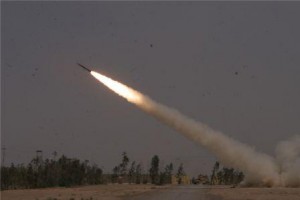 Strange name, "bowling chart," but it's a simple and powerful tool. It forces critical thinking around breakthrough objectives and facilitates typically monthly checkpoints that help drive accountability, PDCA and ultimately execution. When matched up with a Gantt chart (the combination is cleverly called a "bowling and Gantt chart"), it's pretty cool stuff.
Strange name, "bowling chart," but it's a simple and powerful tool. It forces critical thinking around breakthrough objectives and facilitates typically monthly checkpoints that help drive accountability, PDCA and ultimately execution. When matched up with a Gantt chart (the combination is cleverly called a "bowling and Gantt chart"), it's pretty cool stuff.
So, what's a bowling chart? It's essentially a matrix that, among other things:
- reflects one or more metrics (i.e., productivity - parts/person/hour),
- establishes a baseline or "jumping off point" (JOP) for each metric (i.e., 52 parts/person/hour),
- ties the metric to a time-bounded target (i.e., 85 parts/person/hour by 10/31/2010),
- interpolates the monthly targets ("plan") between the JOP and the final target,
- easily and visually compares monthly performance (plan vs. actual) and highlights when a monthly period meets or beats the plan (shaded in green) and when it does not meet the plan (shaded in red), and
- if lean leaders are doing their job, compels the "owner" of the chart and the related execution to generate a "get to green plan." Think PDCA.
But the thing I would like to focus on right here is trajectory - the improvement path between the JOP and the final target. Many folks don't even worry about the periods between these two points. This type of "focus" often produces the sames results as those experienced by high school students. Who cares about midterms...?
No interim targets, no chance for real PDCA. Think management time frame. Think pitch. The smaller the time frame, the more likely and quickly we will identify when we are drifting off target and the more responsive we can be in identifying root causes and applying effective countermeasures.
If your people are required to create bowling charts, whether it's part of the strategy deployment process, A3 preparation or even value stream improvement plan creation, they have to think about trajectory. Improved performance is rarely linear. The bowling chart begs consideration of the implementation process, it's timing and sustainability. Using the example introduced earlier, if the productivity improvement is expected to be largely driven by a kaizen event focused on standard work and continuous flow and that event isn't happening until 2 months after the JOP, then the plan for the first two months after the JOP probably shouldn't be too much different than the JOP.
The trajectory exercise is a good thing. It prompts deep thinking about implementation steps, sequence, timing and impact. Talking trajectory with lean leaders and other stakeholders should facilitate some good "catchball" and help identify and address unreasonable expectations, timid expectations, resource shortfalls, etc.
So, oftentimes it's not all about the destination, it's also about the path...or the trajectory.
Related Post: Check Please! Without it, PDCA and SDCA do NOT work.
